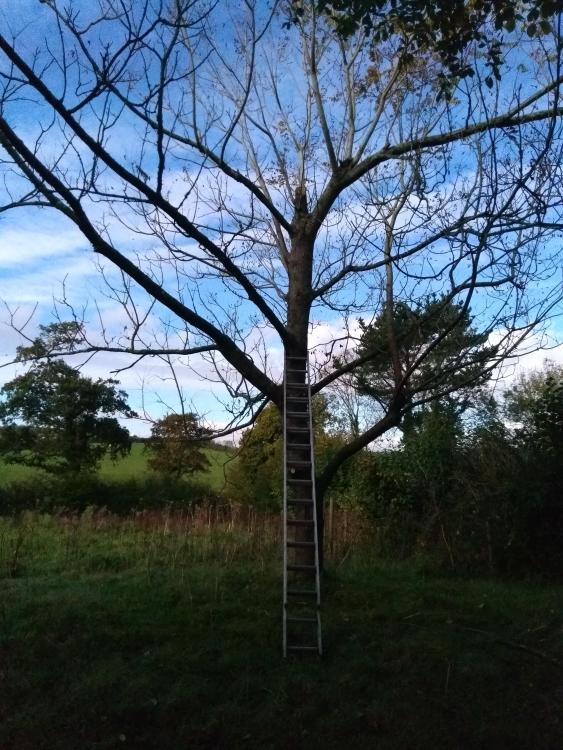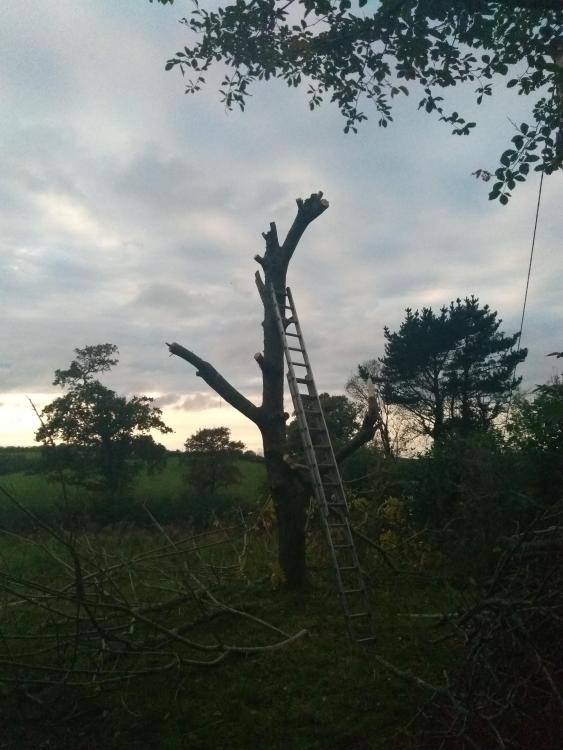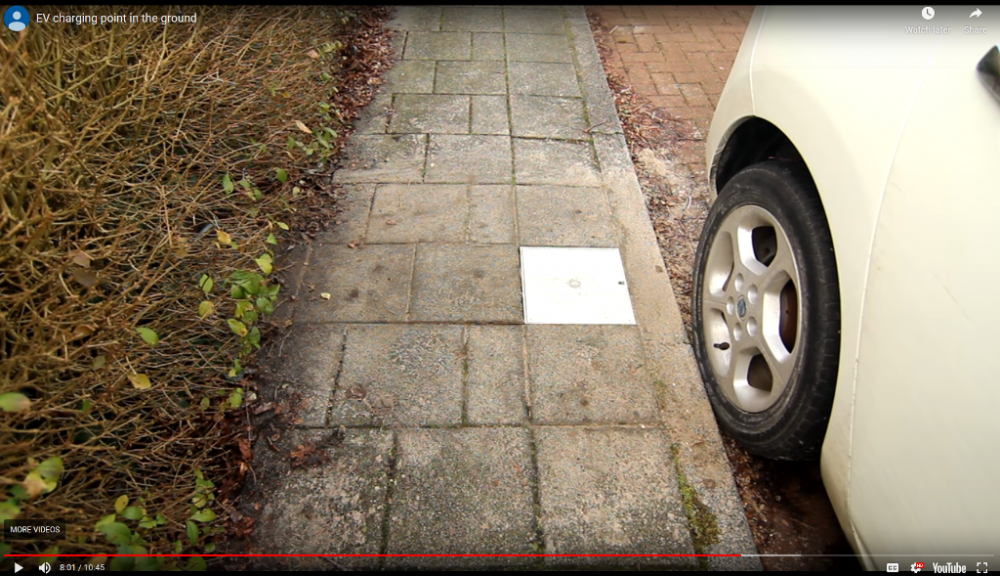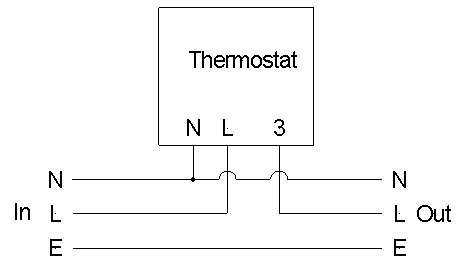Leaderboard
Popular Content
Showing content with the highest reputation on 10/28/19 in all areas
-
If we (as a nation) were really concerned with the environment, we would look at car usage as well as car type. Just changing for a less polluting car is not the answer, unless we also do something to reduce our car use. I don't know the solution but travelling to and from work has always been by far my biggest usage and those are the journeys we need to reduce. I am still not convinced "transport" is the big villian in pollution. It is without doubt an easy target and a convenient thing to blame and demonise and easy to tax to the hilt in the guise of "solving" the problem. But our previous house used to burn about 2000 litres of Kerosene each year, that is roughly twice as much as the petrol my car burns in a year. Yet we don't see domestic fuel taxed at road fuel rates and we (so far) hear little about domestic fuel usage. We have "solved" the domestic fuel problem by building our new house to be low energy, so now the new house does use a lot less fuel than my car, so our next step logically now is to change the car. I wonder just how long before we really start to hear sensible proposals to really reduce domestic fuel usage, and that must be two fold, reducing heating requirements (better insulation etc) AND cleaner forms of fuel for what heating is needed.2 points
-
I'd also add the the "in car" lifespan of current LI batteries is anywhere from 15-25 years. After that, they'll have another useful life of another 10-15 years as static storage. Eventually when it's no longer usable, 100% of the lithium and cobalt can be extracted. And we're at the beginning of the curve, things can only improve with further R&D. Compare that to the lifespan and recycling of an ICE unit... The arguers against EV technology are beginning to sound like the typical climate change denial stuff. they conviently forget about the embedded energy in ICE units and the collasal environmental impact of oil exploration, refining and distriburion. IICR the embedded carbon in petrol by the time it gets to the pump is about 25% on top of the tailpipe emissions. There's more education required. But I can't believe how rapidly things are changing... A year ago nobody (in causal circles) was talking about EVs... Now it's a regular thing.2 points
-
Clamp a length of 2x4 vertically to the joist, you should be able to twist them back to plumb using it as a lever.2 points
-
1 point
-
I think ultimately BC have the say. However in this case they said they are happy to do whatever the structural engineer said so as long as they had it in writing before completion. In the end the engineer came out and made several measurements and we ended up with various depths for the foundations. We went from 11 m3 of concrete needed to 37m3 !! All done and laid now. They also had to add clay boards on the inside of the foundations.1 point
-
So if @pocster goes for the 600mm one, with no joint, then how's about that, then?1 point
-
1 point
-
Spent a few days on site last week to do some site prep while waiting for the next version of plans to be completed (yawn - another story!). We do know however that there is one diseased tree (a horse chestnut) and another tree that sits where the front door/porch will ultimately exist that needed to come out. The other tree (supposedly a walnut) had a branch that had started to encroach on the power line to next door. Being an intrepid climber, and armed with a long lopper and a hand rasp saw, and a couple of long lengths of rope I was able to give them both a short back and sides, although the chestnut remains with a small mohican to be dealt with. In a couple of weekends time I shall be back on site with a chainsaw (and the rope) to finish things off. We do have plans to replant once the major construction phase has been completed.1 point
-
Yes, black LR AWD, without FSD, but with the black premium interior. Couldn't justify FSD, as I don't think it will be a great deal of use here for some time. I also didn't think knocking just over a second off the 0-60 time was worth the extra cost of the Performance model, either. I reckon 4.4s to 60 is quick enough for the lanes around here. Hard to see how they could have any problem with something that presents less of a hazard to a partially sighted person than a paving slab:1 point
-
1 point
-
The problem with most things in the world is actually over-population. Solve that and all the other problems will go away by themselves!1 point
-
Where to charge is an interesting one. I am sure if I had an EV most of my day to day use could be dealt with by home charging. It is when we go away on holiday or to visit relatives that fast en-route charging will be needed. e.g our short break last week was about 400 miles door to door. So both the outward and return journey would have need an en-route charge. This is where you would think motorway services would step up to the mark and provide ample charge points to recharge your car in half an hour while you have a coffee and a break. But what I hear is many of the motorway charge points don't work, and knowing motorway services prices they would be expensive (we actively try and avoid buying petrol from them for that reason) You would think independent cafe's and restaurants that are close to motorway junctions would be installing lots of fast, cheap charge points, and encouraging people off the motorways. Exactly the sort of thing that could work if there was a national directory of all available public charge points. I presume some sort of directory must exist already? (if not is damned well should) Destination charging is another issue. Where we stayed last week was a budget self catering and we opted for free on street parking. There was no public EV charging that I saw nearby, and a budget outfit like this that does not have off street parking cannot install charge points for use by it's guests. It would be sad if owning an EV forced us to pay more for accommodation just to get somewhere with off street parking and a charge point.1 point
-
The Dutch are allowing charge points to be installed in boxes in pavements by home owners. Seems a reasonably enlightened approach. Fairly easy to do in most cases, just a trench across the pavement with a small box set in near the kerb. The box has a weatherproof socket in, that can be accessed by lifting the lid. Power can be turned on or off from inside the house, which stops someone else from just charging at the home owner's expense. I've seen a fair few pavements with channel drains cut across them, so allowing something like that to take a charge cable would seem pretty easy to do, practically. Wouldn't cost a lot, either, just half an hour with a disc cutter to make a groove into which some form of cable channel could be inserted.1 point
-
1 point
-
Many houses without off street parking could have a charger if they were allowed to run a cable across the pavement. Perhaps it should be Permitted Development to cut a channel across the pavement in which to lay and cover a charging cable? Would need some sort of standard design?1 point
-
I'd be inclined to stick a bit of thin ply to the foam (a bit of 4mm to 6mm ply would do) and then screw the box to that. PU bubble glue works very well for stuff like this.1 point
-
1 point
-
You should be able to twist the joists back using noggins as they should square up the joists. Herringbone steel struts won’t work as they need to be on the top of the joists or will be too long1 point
-
Looking at your wall build up, 600mm will get you into your PIR inside. Should be easy to dig a hole in that.1 point
-
If of any assistance, here from p6 onwards my fitting one of those Screwfix bib tap things. If only for how I put 23 turns of ptfe tape on like the Welsh Wizard said:1 point
-
Ok understood- hadn't thought of this fix yet. How best to fix the c'tex to osb, the osb to the frame, & the floor to the c'tex? One thing I'm unsure on, is 3 cabin outer beams. The back beam.. is only fixed by 2 turbo bolt screws each side, as is the cabin front beam (one midway @ spanning across plinths).. as is the very front deck beam. Ideally I needed some form of joist hanger/ bracket thing, like the far more rigid/ secure adjacent joists themselves (which the cabin's load doesn't bear upon). The two outer beams are fine/very secure.. but the back & front cabin beams.. are alot less secure. Anyway sunday's work..1 point
-
1 point
-
That is a standard Hep2O elbow. Don’t forget an internal isolator - Balofix or similar.1 point
-
This is what I did, Copper thro the wall and a hep 20 90’ bend inside which will take copper with no insert.1 point
-
Hep connector straight onto the end of the copper after you put it through the wall.1 point
-
1 point
-
Not so much "best practice" it is more a case of clear absolute minimum clearance as defined in building standards. It depends on the the soil type and risk of heave. 200mm for clay, less for other soil types, 100mm or 150mm I think.1 point
-
When they do totally lose it without an LPA in place then one option is a Court Order of Protection. Hellishly expensive and grief. Going through the process at the mo ref my Mum. All this can be avoided by getting a £29.99 LPA pack from WH Smith whilst they're still compos mentis. What grates a bit here is we got the Smith's pack but my father brushed it off saying my barrister brother knew better / was dealing with it. Now there's a solicitor involved and it's all £££. WTF do I know I'm just "the youngest who likes playing with wires, wood and metal" ? Edit: Even better, it was £9.99: https://www.whsmith.co.uk/products/lawpack-power-of-attorney-kit/9781910143100.html1 point
-
Ok ! I think I just want a garden tap with a back plate and pipe like https://www.screwfix.com/p/hose-union-back-plate-15mm/56415 then presumably some hep20 to copper connection ? The hole through the wall would have to be quite large as once Hep2o to copper connector is on I’ve got to push the whole lot back into the wall . This the correct approach??1 point
-
I turn things up roughly 0.5o per day, allowing the full 24hrs for things to acclimatise at their own pace. Takes a good week or so to get things to 'simmer down'. Having the Ivar type blending set, a-la @JSHarris's type of set, is of huge importance as if you try to do this type of heating management with a normal thermo-mechanical type of blender ( aka TMV ) you''ll never reliably get down to a flow temp accurate enough to stop the above-mentioned overshoot. The room stat ( correct choice of ) is of equal importance. If you don't get those two elements right you'll not stand a chance, but if you get it right the curve for the heating hysteresis will be as close to a flat line ( as possible ) eg a near equilibrium as far as achieving a comfortable thermal constant. PH is nuts, and very difficult to convey to those who have had no direct experience of 'it'. With a heated slab and the house at equilibrium you can open all the door and windows for 10 minutes when it's -5 outside, blow all the heat out of the house until you're freezing your knackers off, and then just shut the doors and windows back up again. Within 3-5 minutes the house is back to how it was. For those who don't want to fit UFH, in conjunction with a decent slab, good luck with that!!1 point
-
Yes that is it, that will almost certainly be your soil vent, assuming is is directly above the pipe in the kitchen/bathroom etc.? That is what I was wanting to know indeed, if you had anything penetrating your roof, so it will pass through the roof and on your roof you will have a funny looking tile or a piece of pipe sticking through it. The issue is probably with the flashing piece around the pipe, it looks like a big rubber grommet with a hole through the centre which the pipe will pass. Over time they harden and the seal fails. It may of course be something else like a tile has slipped and the water is running under it etc. but the issue would appear certainly to be related to the soil vent. Remedy would be to get up someone up there to look at it, a roofer would be who I would call (well no that is a lie I would do it myself) - you could attempt it yourself it is not difficult but it is high and dangerous and requires the knowledge of roofing and flashings to get it fixed well, but with all due respect, I get the feeling you are not a DIY/technically minded person so you may just create a bigger issue. Time to call the roofer.1 point
-
1 point
-
@Nickfromwales I used the Crydom CKR range which is supplied here by RS Components with other options. These have an in-built heat sink and are Din mount so go well into a simple steel enclosure. The nice thing about these is that they include an opto-isolated input that you can drive directly with a 5V 15mA [TTL] input. Some of the Arduino GPIOs can drive this, but devices like the RPi and ESPs use 3.3V logic. I use a MCP2008A 3.3V I2C to 8-port 5V driver IC to drive the Crydom iputs,, but another option is to use something like a SparkFun Logic Level Converter which surface mounts the MOSFET drivers to do this magic and costs a few £. The advantage of using an RPi directly is that you can use something like NodeRED or one of the HA products to do all of the nasty S/W stuff. Either contact me offline or raise a Boffin's topic and poke me if you want to go into more detail.1 point
-
When I was looking for a plot I stopped outside any nice looking houses I saw under construction to speak to the builder. I was amazed how many were happy to show me around before they had covered up their appalling workmanship. Either they didn't know it was bad or they didn't think I would know what I was looking at. I remember one in particular opened a cupboard door to show me an UFH manifold that had just been installed and it was a right mess. They always gave me a business card but quite a few went in the skip as I walked off site. Tip for anyone looking to choose a builder... Most will offer to take you to house they have built for someone but it's far better to see one they currently have under construction if you can.1 point
-
@PeterW be careful that you don't repeat what JSH did once - - which was to crank up the heating to try to get back to setpoint quickly. If you do that then you'll get there reasonably quickly; and the temperature will the over shoot, and then oscillate as the slab vs the rest of the fabric get back to equilibrium. IIRC Jeremy overshot to something like 26°C.1 point
-
I got asked to leave a development a couple of months back after I started pointing out all the issues with a new house ... The site manager told me I was trespassing and they “could call the police...” which was kind of ironic given I was stood on the road with a friend who’s a copper .... kwalitee in new builds is appalling .!!!1 point
-
The connections on the thermostat are neutral, line in and switched line out (terminal 3). Connect the incoming neutral (blue) to the N terminal, and also to the heater neutral (either cut the plug off or add a single gang outlet wired to the thermostat). The incoming line (brown) goes to the thermostat L terminal and the thermostat terminal 3 connects to the line on the heater (or the socket, if you opt to wire it that way). The supply that goes to the thermostat needs to be fused or otherwise protected to match the size of cable used in this case. You can either choose to wire it up to a lead with a 13 A plug, using a 3 A fuse, or you could wire it to a switched fused connection unit, also with a 3 A fuse. Make sure the incoming earth connects to the heater (there's no earth on the thermostat).1 point
-
Yes, been there with my Mum, as my brother said at her funeral “we lost her twice, once to dementia and once to life itself”. Might sound daft but when I had my old (17 year old) Labrador put down, not only did he have cancer but I was sure he had dementia as he didn’t seem to recognise even me and I had him since a puppy. I hope someone shoots me if I get that bad. (I agree with dignitas!).1 point
-
Yet to turn on my Vent Axia SX advanced. All installed apart from electrics and the condensation drain. Mine is in a bedroom!! - as it was the only place available. Be very interesting to judge it's noise in normal mode and boost..1 point
-
If you look through his whole site it is very informative. I’ve seen one of his surveys and they make your average home buyers survey look like a comic. This bit is very true : Every damp problem has a specific cause, and it is usually easy to fix that cause - for example, faulty guttering, external ground levels too high, concrete / cement render trapping moisture on outside walls, and so on. Our survey will outline any problems, and suggest solutions, which never include injection damp proofing! The silane based chemicals can’t work the way they are described to, yet I’ve seen them suggested where wholly Inappropriate by bank and mortgage company surveyors that suggest you can “fix” damp into this way. As he says repeatedly, find the cause of then problem first ...1 point
-
I know there's loads of fraudsters about and the bit about sticking the probes into lead paint was funny but it came across a bit as saying "it's not damp it's because of the salts in the substrates". There must be cases of damp that just happen too to be "salty" and presumably you'd see higher conductivity than a "dry" salty substrate? I'll hold my hands up to in the past to repairing "breathable" lime plastered walls with a modern, pva laden mix! ? This through ignorance more than anything else. Blocked air bricks was the culprit for underfloor damp on my 1865 first place, a 2 up 2 down terrace. When I did the bathroom just, the inside concrete floor was level with the outside path along the house and the inside floor was itself 6cm higher than the adjacent room floors. The bottom of the cavity was rubble filled too. I took the path up that was bridging the dpc and everything rapidly dried out.1 point
-
0 points
-
Right, as much as I am enjoying this interesting discussion, and I do enjoy many of the discussions on this forum - we have some brilliant minds here and it would be great to sit in a pub with many of you and discuss many things from concrete pours to EV's, but I must shut my laptop down for the night (lowering my carbon footprint by shutting down and I switch off at the wall!) and go home!0 points
-
Just to clarify if a bloke called @Patrick pops by and offers to lend a hand, decline politely and walk away. ????0 points
-
0 points
-
0 points
-
I wonder if, no doubt at great expense, you could have discreet sockets in the bi-fold frames and small, replaceable cable loops? If money were no object...0 points
-
Just read this from an air leakage testing compliance engineer who was trying to blow the whistle on volume builders in 2016. “obviously any new home will eventually pass an air leakage test due to the amount of mastic and expanding foam used everywhere to seal gaps. But what I see on a daily basis – and this is pretty much every house tested – is mastic being applied to the bottom of skirting boards and under kitchen units and baths with larger holes being filled with expanding foam. Then the air test is carried out and it passes. What follows is all the mastic is then cut out before the carpet fitters fit the carpets! This is standard practice and I feel a total fraud by passing these buildings but it’s what I’m paid to do. I tested one house that failed due to air leakage from all the skirting boards around the house, the builder then applied mastic under all the skirtings, expecting me back first thing the next morning. I didn’t get there until the early afternoon, by which time the carpet fitters had cut it all out! I tested it and it failed due to leakage from the skirting! The builder then re masticed the skirtings whilst I waited, I retested it and it passed. While I was packing my testing equipment away the mastic was cut out again! This is not a one off but something that is going on all the time.”0 points
-
I got a quote this morning of £7000 just to do the steel for our cantilevered stairs. I replied saying thank you. Company then immediately replied asking if the price was of any use so i replied with the following: Grant, Yours is the first quote so far, however with speaking to a couple of people that have had similar steel fitted for a cantilevered stair it seams very expensive. I had priced the steel previously, think it was around £1200-£1500 for materials, so wouldn't have expected the labour to be £5500-£5800 for 2 - 3 days of fabrication effort. Regards Stuart Strangely I haven't heard back from Grant.0 points



.thumb.jpg.bac90f3bbf6868cf2118d010d936c99d.jpg)














